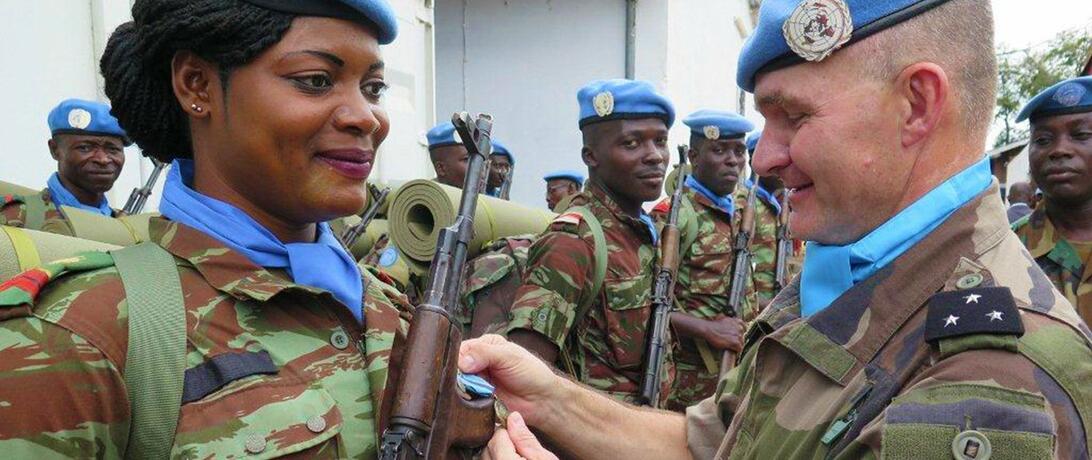
In response to a list of the most dangerous countries in the world for women, Our Secure Future poses ways that women--and the Women, Peace and Security agenda--can be the solution to violence against women.
At Our Secure Future, we strive to flip the age-old victimization narrative of violence against women on its head to emphasize women’s empowerment and agency. However, the victimization narrative is far too common and one example of it can be found in a poll released by the Thomson Reuters Foundation in 2011, naming the top five most dangerous countries in the world for women. Today, many of those same countries also rank poorly on Georgetown University’s Women, Peace and Security Index, which we blogged about last week.
However, in each of these top five countries, there is a window of opportunity for increased female inclusion to serve as the solution to that very same violence and inequality. This blog will examine those states once named the three most dangerous countries for women—Afghanistan, the DRC, and Pakistan—and propose ways commitment to the Women, Peace and Security agenda can improve conditions for women and girls in each.
Afghanistan
Afghanistan ranked first amongst the most dangerous countries in the world for women. The country was criticized for poor women’s health, violence against women, and economic discrimination. Women face a one in eleven chance of dying during childbirth due to poor access to maternal health. Women’s economic and educational opportunities are severely restricted. Eighty seven percent of women in Afghanistan are illiterate and 70 to 80 percent of women and girls face forced marriages.
Afghanistan’s parliament is 28 percent women, which is significantly higher than the portion of female representatives in the US. This is likely due to Afghanistan’s 2004 requirement that women occupy 27 percent of parliamentary seats, a quota that lowered to 20 percent following a regression in women’s rights. Further increased female representation would improve health and opportunities for women in Afghanistan as female representatives generally place higher priority on initiatives such as public health and education. An increase of female representatives in government following the fall of the Taliban already saw dramatic improvements in education and girls’ enrollment in school, adult female literacy, child mortality, and the state’s overall health. Continued commitment to women in governance promises to maintain this trend.
Democratic Republic of Congo
For reasons of “staggering levels of sexual violence,” the DRC came in second to Afghanistan. While there seemed to be varying levels of agreements on the exact rates at which women experience sexual violence in the DRC, the estimates range from 40 women per day to 1,150 per day. Regardless of the exact number, sexualized violence is a clear problem.
While these numbers certainly are staggering, there are many solutions to protect civilian women. While multiple allegations of sexual misconduct exist against UN peacekeepers serving the UN Organization Stabilization Mission in the Democratic Republic of Congo (MONUSCO), such operations can be improved. For example, more female peacekeepers could be incorporated into MONUSCO efforts. The US Institute of Peace found female peacekeepers are better suited than male peacekeepers in a variety of functions that include:
“information gathering for early warning and human rights investigations; screening and assisting female ex-combatants during disarmament, demobilization and reintegration (DDR) processes; assisting survivors of gender-based violence; searching women and women's quarters; mentoring female cadets at military and police academies; and providing medical care to women in segregated societies.”
One woman in particular is showing the impact that women can have on the effectiveness of peacekeeping. Major Seitebatso Pearl Block was commended in 2017 for creating a mission-wide SMS campaign to connect with women experiencing abuse in remote parts of the country. This achievement is a sterling example of the positive impact women in peacekeeping forces can have in combatting sexual violence and a solid justification as to why there should be more women involved in the DRC’s peacekeeping efforts.
Pakistan
In Pakistan, women face a different type of violence—one that is cultural, tribal, and religious in nature. Women are subject to forced marriages, acid attacks, stonings, and physical abuse. A stunning 90 percent of Pakistani women face domestic violence and over 1,000 “honor killings” are committed against women and girls for bringing shame on their families each year.
In Pakistan, women can also be the solution to what appears to be culturally accepted abuse. For example, an increase in female police officers would reduce instances of domestic violence. Less than two percent of Pakistan’s officers are women. However, a United Kingdom Department for International Development (DFID) project to improve women’s access to security services and fair justice in Pakistan illustrated the positive impact women might have on local policing. A sharp increase in the number of female police recruits combined with the implementation of “women’s desks” for women to lodge complaints led to a 67 percent increase of women reporting to the police from 2013-2016. The evidence indicates that greater integration of female police officers will continue to see dramatic reductions in honor killings and domestic violence.
Women, Peace and Security is the Solution
Globally, narratives on violence against women acknowledge the inequities faced by women and girls, but often fail to pose viable solutions that involve women’s agency. The Women, Peace and Security agenda is that solution. Empirical research shows us that an increase in women’s participation—in governance, peacekeeping, policing, or elsewhere—is the most effective way to reduce gender-based violence. Women, Peace and Security solutions are effective not only in the world’s most dangerous countries for women, but in reducing violence even in states deemed safer for women. Instead of focusing on women’s victimization, Women, Peace, and Security focuses on their empowerment and agency, giving them the reigns to create solutions that work.
Tells us how you think women can be the solution on Twitter with @OurSecureFuture #WomenAreTheSolution.
Article Details
Published
Topic
Program
Content Type
Opinion & Insights